-
 Bitcoin
Bitcoin $119800
1.38% -
 Ethereum
Ethereum $3873
3.25% -
 XRP
XRP $3.247
1.85% -
 Tether USDt
Tether USDt $1.001
0.02% -
 BNB
BNB $840.4
5.94% -
 Solana
Solana $190.0
2.55% -
 USDC
USDC $1.000
0.03% -
 Dogecoin
Dogecoin $0.2433
2.69% -
 TRON
TRON $0.3197
-0.05% -
 Cardano
Cardano $0.8367
1.39% -
 Sui
Sui $4.327
3.11% -
 Hyperliquid
Hyperliquid $44.00
0.31% -
 Stellar
Stellar $0.4461
1.76% -
 Chainlink
Chainlink $19.25
4.61% -
 Hedera
Hedera $0.2941
3.90% -
 Bitcoin Cash
Bitcoin Cash $598.4
6.89% -
 Avalanche
Avalanche $26.19
4.67% -
 Litecoin
Litecoin $115.1
0.50% -
 Shiba Inu
Shiba Inu $0.00001427
1.55% -
 Toncoin
Toncoin $3.379
2.01% -
 UNUS SED LEO
UNUS SED LEO $8.966
-0.16% -
 Ethena USDe
Ethena USDe $1.001
0.02% -
 Uniswap
Uniswap $11.04
4.16% -
 Polkadot
Polkadot $4.239
2.00% -
 Monero
Monero $324.6
0.36% -
 Bitget Token
Bitget Token $4.672
2.46% -
 Pepe
Pepe $0.00001294
2.69% -
 Dai
Dai $0.0000
0.01% -
 Cronos
Cronos $0.1443
2.71% -
 Aave
Aave $302.9
1.98%
What is the issuance mechanism of USDT?
USDT's issuance, a complex process involving commercial paper and other assets, lacks complete transparency, leading to ongoing scrutiny and debate regarding its stability and risk profile.
Feb 28, 2025 at 12:00 pm
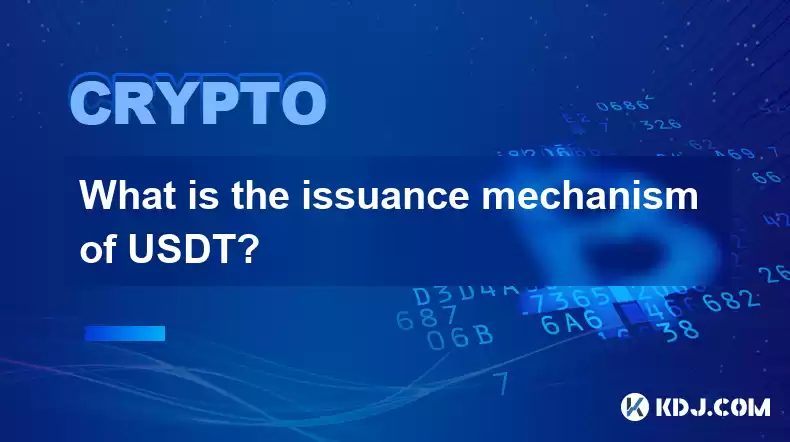
What is the Issuance Mechanism of USDT?
Key Points:
- USDT's issuance mechanism is complex and has evolved over time, moving away from a fully-backed 1:1 USD reserve to a more nuanced approach involving commercial paper and other assets.
- Understanding the intricacies of USDT's backing is crucial for assessing its stability and risk profile. The transparency surrounding this mechanism has been a subject of ongoing debate and scrutiny within the cryptocurrency community.
- The mechanism involves several key players and processes, including Tether Limited, custodian banks, and auditing firms (although the effectiveness of audits has been questioned).
- Concerns about the stability and transparency of USDT's backing have led to regulatory scrutiny and market volatility.
Understanding the USDT Issuance Mechanism:
The issuance mechanism of Tether's USDT (USD Tether), a prominent stablecoin pegged to the US dollar, is a multi-faceted process that has undergone significant changes and continues to be a subject of intense debate and scrutiny. Unlike some cryptocurrencies with clearly defined algorithmic issuance, USDT's process is less transparent and involves a blend of commercial paper, cash, and other short-term debt instruments. Let's break down the key aspects:
- The Role of Tether Limited: Tether Limited, the company behind USDT, acts as the central issuer. They are responsible for managing the reserves that supposedly back each USDT token in circulation. The company's operational structure and its relationship with other entities, particularly its relationship with Bitfinex (a cryptocurrency exchange), has been a point of contention and has fueled concerns about conflicts of interest. Understanding the internal operations of Tether Limited and the decision-making processes within the company is critical to evaluating the soundness of USDT's issuance. The lack of complete transparency regarding these internal processes, however, hinders a comprehensive understanding.
- The Reserve Composition: The composition of Tether's reserves has shifted over time. Initially, the claim was a 1:1 backing with US dollars. However, subsequent disclosures revealed a more complex picture involving a mixture of assets, including commercial paper, treasury bills, secured loans, and other short-term debt instruments. The proportion of each asset type in the reserve has fluctuated, leading to concerns about the liquidity and risk profile of the reserve. Commercial paper, in particular, has been a focus of criticism, as it represents debt issued by corporations and carries a higher level of credit risk compared to cash or government bonds. The maturity dates of these assets also contribute to the risk profile, as a large concentration of short-term debt maturing at the same time could create liquidity challenges. The lack of granular details regarding the specific issuers of commercial paper and the creditworthiness of the borrowers adds to the opacity surrounding the reserve composition.
- The Issuance Process: When a user wants to mint USDT, they typically send US dollars or an equivalent value in other fiat currencies to Tether Limited or an authorized partner. Tether Limited then verifies the transaction and issues the corresponding number of USDT tokens onto the blockchain. This process involves several layers of verification and compliance checks, aiming to prevent fraud and maintain the integrity of the peg. However, the specifics of these checks, including the verification processes and the involvement of third-party intermediaries, remain largely undisclosed, raising concerns about the potential for manipulation or errors. The absence of a publicly auditable and transparent ledger tracking the flow of funds into and out of the reserve further contributes to the lack of clarity.
- The Role of Custodian Banks: Tether Limited utilizes custodian banks to hold a portion of its reserves. The identity of these banks and the details of the custodial arrangements have been subject to change and scrutiny. The transparency of these relationships and the level of oversight provided by the banks are key factors influencing the confidence in USDT's backing. The potential for conflicts of interest between Tether Limited and its custodian banks needs careful consideration, as it could impact the accuracy and reliability of reserve reporting.
- The Importance of Audits: Independent audits are crucial for verifying the claims made by Tether Limited regarding the composition and size of its reserves. However, the quality and scope of these audits have been consistently debated. Past audits have faced criticism for their limited scope and lack of granular detail, failing to provide sufficient assurance to the cryptocurrency community about the true state of the reserves. The lack of consistent and comprehensive audits casts doubt on the accuracy of Tether's public statements and raises concerns about the potential for misrepresentation. The selection process for auditing firms and the independence of their work have also been questioned, highlighting the need for greater transparency and robust regulatory oversight.
- Regulatory Scrutiny: The issuance mechanism and the overall operations of Tether Limited have attracted significant regulatory attention globally. Concerns about the stability of USDT and its potential impact on the broader cryptocurrency market have led to investigations and enforcement actions in various jurisdictions. The outcome of these regulatory efforts will significantly impact the future of USDT and its issuance mechanism. The regulatory landscape is constantly evolving, and the legal and compliance challenges faced by Tether Limited will continue to shape the way USDT is issued and managed.
- The Role of Smart Contracts (in some instances): While the primary issuance mechanism involves off-chain processes, certain variations or related products might leverage smart contracts to facilitate some aspects of USDT issuance or redemption. However, the core reserves management and verification remain largely off-chain.
FAQs:
Q: Is USDT truly backed 1:1 by the US dollar?
A: Tether has historically claimed a 1:1 backing, but the composition of its reserves has evolved to include commercial paper and other assets beyond just US dollars. The degree to which this constitutes a true 1:1 backing remains a subject of debate and scrutiny.
Q: What are the risks associated with investing in USDT?
A: The primary risks associated with USDT include the risk of its peg breaking (meaning its value deviates significantly from $1), counterparty risk (the risk that Tether Limited might not be able to honor its obligations), and regulatory risk (the risk of government action impacting the operation of USDT).
Q: How can I verify the claims made by Tether Limited about its reserves?
A: While Tether publishes periodic attestations, the level of detail and transparency provided has been consistently criticized. Independent verification is challenging due to the lack of complete transparency in their operational processes and reserve composition.
Q: What is the future of USDT’s issuance mechanism?
A: The future of USDT's issuance mechanism is uncertain and will likely depend on regulatory developments, market pressures, and Tether's ability to address concerns about transparency and reserve management. Increased regulatory scrutiny and demand for greater transparency could lead to significant changes in the way USDT is issued and managed. This may include stricter regulatory compliance, enhanced auditing procedures, and potentially a shift towards a more transparent and verifiable reserve composition.
Q: Are there alternatives to USDT?
A: Yes, there are several other stablecoins available, each with its own issuance mechanism and risk profile. It's important to research and understand the risks associated with each stablecoin before investing.
Q: What role do commercial papers play in USDT’s reserves?
A: Commercial papers, short-term unsecured debt instruments issued by corporations, represent a significant portion of USDT's reserves. This raises concerns due to the inherent credit risk associated with these instruments. A default by a corporation issuing commercial paper held in USDT's reserves could impact the stability of the peg. The lack of detailed information on the specific issuers and the credit ratings of these papers makes it difficult to assess the overall risk associated with this aspect of the reserve composition. Furthermore, the maturity profile of these commercial papers adds another layer of complexity, as a significant portion maturing at the same time could create liquidity issues for Tether.
Q: What is the significance of custodian banks in USDT's operations?
A: Custodian banks play a crucial role in safeguarding a portion of USDT's reserves. However, the lack of complete transparency about the identities of these banks and the specifics of the custodial agreements raises concerns. Questions remain about the level of independent oversight these banks provide and the potential for conflicts of interest between Tether Limited and its chosen banks. The lack of publicly available information about the custodial arrangements limits the ability to independently assess the security and reliability of the reserve holdings. This opacity contributes to the overall uncertainty surrounding the backing of USDT. Greater transparency regarding the custodial arrangements would enhance trust and confidence in the system.
Disclaimer:info@kdj.com
The information provided is not trading advice. kdj.com does not assume any responsibility for any investments made based on the information provided in this article. Cryptocurrencies are highly volatile and it is highly recommended that you invest with caution after thorough research!
If you believe that the content used on this website infringes your copyright, please contact us immediately (info@kdj.com) and we will delete it promptly.
- Tether Gold's Meteoric Rise: Market Cap and Soaring Gold Demand
- 2025-07-28 10:30:11
- Reddit, Crypto, and Altcoins: Navigating the Hype in 2025
- 2025-07-28 10:30:11
- Bitcoin, Altcoin, Volume Surge: Decoding the Crypto Market's Latest Moves
- 2025-07-28 10:50:20
- Bitcoin, Altcoins, and 2024 Targets: A NYC Perspective
- 2025-07-28 10:50:21
- Moo Deng Meme-Coin Mania: ROI or Just Hype?
- 2025-07-28 10:55:13
- Ethereum, Injective, and Tokenized Stock: A New Era in DeFi?
- 2025-07-28 11:10:12
Related knowledge
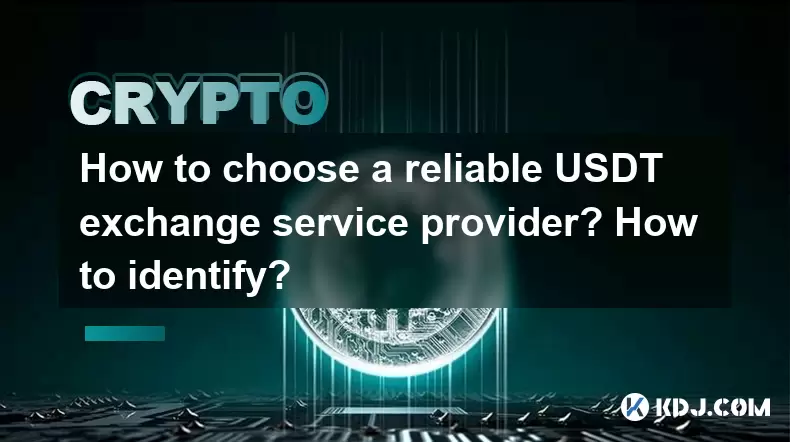
How to choose a reliable USDT exchange service provider? How to identify?
Jun 12,2025 at 03:15pm
Understanding the Role of USDT in Cryptocurrency TradingUSDT (Tether) is one of the most widely used stablecoins in the cryptocurrency market. It is d...
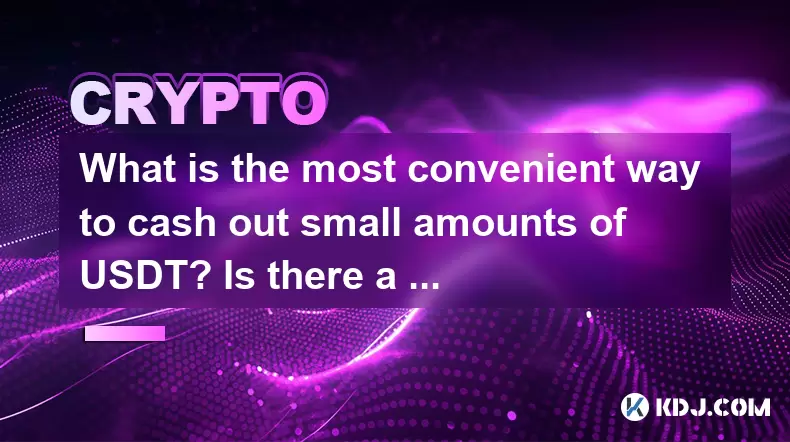
What is the most convenient way to cash out small amounts of USDT? Is there a shortcut?
Jun 11,2025 at 11:00pm
Understanding the Need to Cash Out Small USDT AmountsCashing out small amounts of USDT can be a challenge for many crypto users. Traditional methods o...
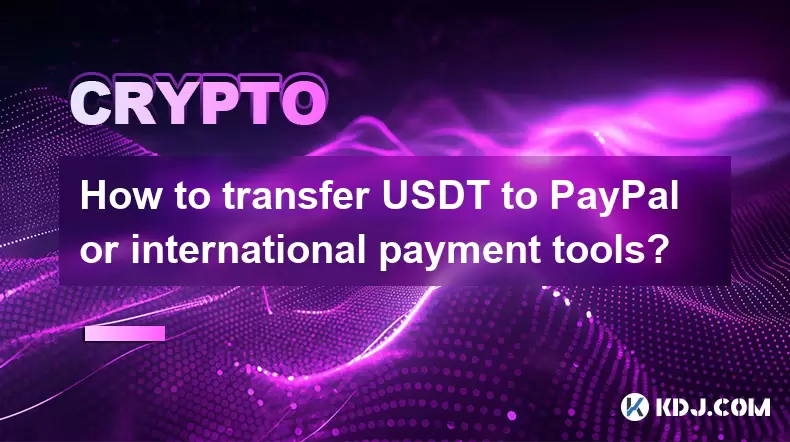
How to transfer USDT to PayPal or international payment tools?
Jun 15,2025 at 05:28am
Understanding the Basics of USDT and PayPal IntegrationUSDT (Tether) is a stablecoin pegged to the US dollar, offering blockchain-based value transfer...
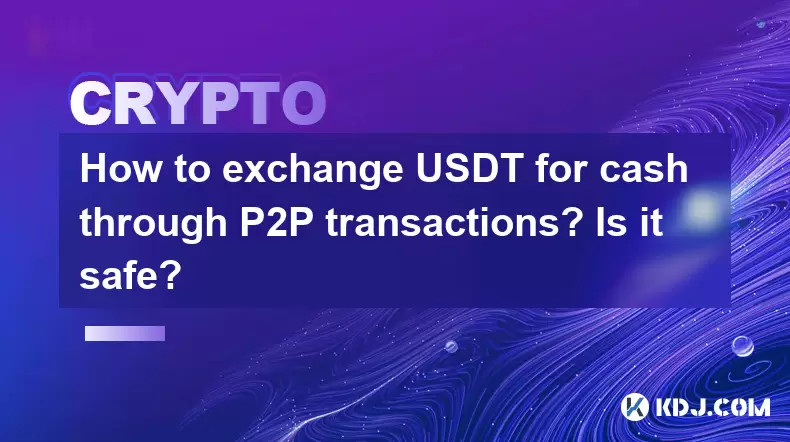
How to exchange USDT for cash through P2P transactions? Is it safe?
Jun 18,2025 at 07:56am
Understanding USDT and P2P TransactionsTether (USDT) is a stablecoin pegged to the value of the US dollar, making it a popular choice for users who wa...
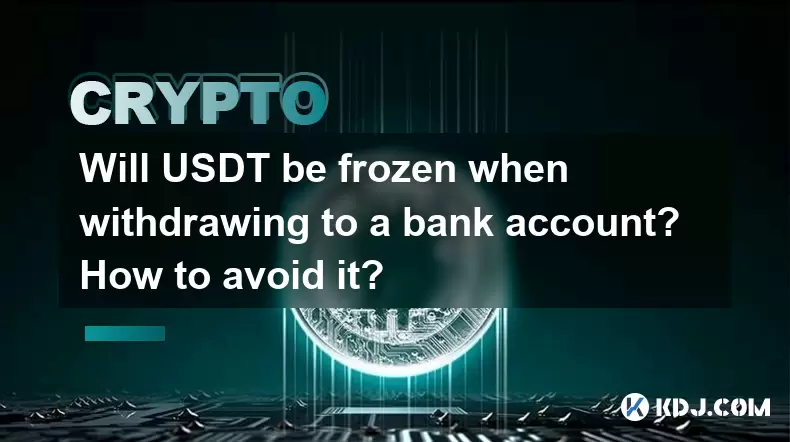
Will USDT be frozen when withdrawing to a bank account? How to avoid it?
Jun 15,2025 at 10:03am
Understanding USDT Withdrawals and Bank Account Freezing RisksWhen users decide to withdraw USDT (Tether) to a bank account, one of the most common co...
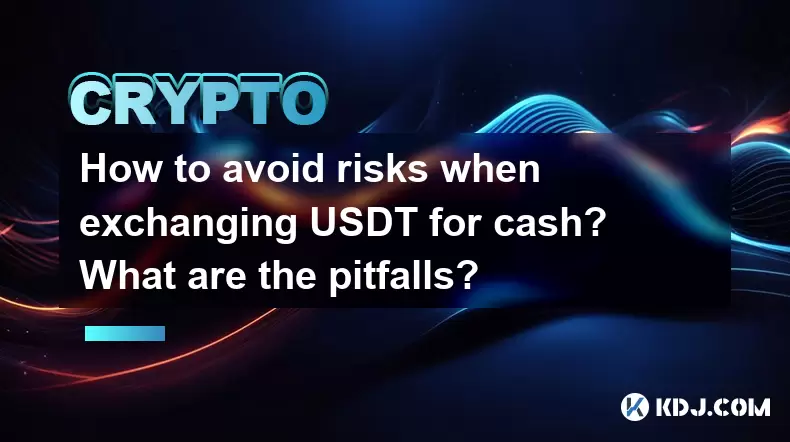
How to avoid risks when exchanging USDT for cash? What are the pitfalls?
Jun 11,2025 at 08:14pm
Understanding the Risks of Exchanging USDT for CashWhen exchanging USDT (Tether) for cash, users must be aware of the potential risks involved. As a s...

How to choose a reliable USDT exchange service provider? How to identify?
Jun 12,2025 at 03:15pm
Understanding the Role of USDT in Cryptocurrency TradingUSDT (Tether) is one of the most widely used stablecoins in the cryptocurrency market. It is d...

What is the most convenient way to cash out small amounts of USDT? Is there a shortcut?
Jun 11,2025 at 11:00pm
Understanding the Need to Cash Out Small USDT AmountsCashing out small amounts of USDT can be a challenge for many crypto users. Traditional methods o...

How to transfer USDT to PayPal or international payment tools?
Jun 15,2025 at 05:28am
Understanding the Basics of USDT and PayPal IntegrationUSDT (Tether) is a stablecoin pegged to the US dollar, offering blockchain-based value transfer...

How to exchange USDT for cash through P2P transactions? Is it safe?
Jun 18,2025 at 07:56am
Understanding USDT and P2P TransactionsTether (USDT) is a stablecoin pegged to the value of the US dollar, making it a popular choice for users who wa...

Will USDT be frozen when withdrawing to a bank account? How to avoid it?
Jun 15,2025 at 10:03am
Understanding USDT Withdrawals and Bank Account Freezing RisksWhen users decide to withdraw USDT (Tether) to a bank account, one of the most common co...

How to avoid risks when exchanging USDT for cash? What are the pitfalls?
Jun 11,2025 at 08:14pm
Understanding the Risks of Exchanging USDT for CashWhen exchanging USDT (Tether) for cash, users must be aware of the potential risks involved. As a s...
See all articles

























































































